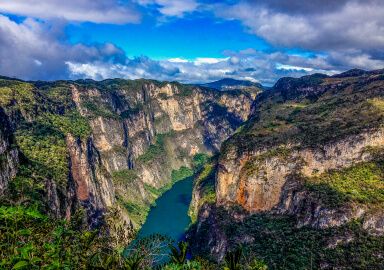Needlefish
Needlefish are smallish, elongate top fish predators of the surface waters of many warmer-water marine and some freshwater areas.
View 19 listings
19
listings
–
price starting from
4
countries
–
to the nearest trip
Where and When?
Needlefish are found along the coasts of most warmer oceans. Two of the larger and more common species are the European needlefish (Belone belone) and the crocodile needlefish or houndfish (Tylosaurus crocodilus), both of which inhabit much of the Atlantic, Indian and Pacific Oceans. A large and important recreational angling species in American waters is the flat needlefish (Ablennes hians) that is found from Chesapeake Bay southwards to Brazil, as well as many other areas. All the larger species are marine and favour coastal waters, bays and reefs, particularly coral reefs. All spend almost all their time near the top of the water column, often in the top few inches., making them extremely difficult to spot.
Needlefish are reputed to move into deeper waters, often offshore, during winter and enter shallow areas in warmer periods. In the tropics they may be caught throughout the year, and in more temperate areas mostly in summer. Needlefish feed throughout the day and night and, while conventional fishing is mostly carried on in daylight, much commercial and some sport fishing is carried on after dark using artificial light. Some needlefish have caused serious injury and even death to swimmers and boaters by leaping out of the water and colliding with them. This can be particularly challenging after dark when shoals of needlefish can cascade over boats and paddle-skis as the fish’s beaks are long and very sharp.
About Needlefish
Needlefish, also called “Long toms” and “garfish”, are all extremely long, thin fish that feed near the surface. They are metallic blue or green above and paler on the belly, with a long “beak-shaped” mouth armed with many obvious and sharp teeth. Needlefish have large eyes and one long continuous dorsal fin. All are members of the Belonidae family which contains 10 genera and 33 species. Well known genera include Strongylura, Belone and Tylosaurus and, while most are marine - usually in coastal waters -, others inhabit some freshwater rivers.
The largest needlefish can attain 1.5 m. (54 in.) and 6.35 kg. (14 lbs.), but most species are much smaller and some do not reach even 50 cm. (20 in.). All are piscivorous and eat a wide variety of small fish plus the occasional insect or other invertebrate that comes within their range. Most needlefish species inhabit shallow coastal waters and, in these, they generally stay within the top 2 m. (79 in.) where they patrol in search of food. They often form small shoals and frequently leap well out of the water chasing food, escaping a predator or trying to throw a hook once hooked. Sexes are alike and mating and spawning often takes place inside the crest of a wave.
How to Catch?
Despite their usually small mass, needlefish can provide excellent sport and good fun. They are a very popular bait for many marine species, are regarded as “good tasting”. Larger specimens can provide a challenge to hook and are fun to play, usually with multiple leaps out of the water to try and dislodge the hook. Shore, jetty and boat fishing can all be of use for getting the angler to the needlefish. As they are a surface feeding fish the same techniques may be used in all circumstances. Light tackle is usually adequate, except when a particularly large specimen is targeted. Many fish will be lost, however, through the hook being thrown or the line being cut by the sharp teeth. A strong, or wire, trace is best and a variety of baits, natural or artificial can be employed. Live or floating natural baits can work well, but it is usually more exciting to spin or fly fish using a fast and erratic retrieve.







